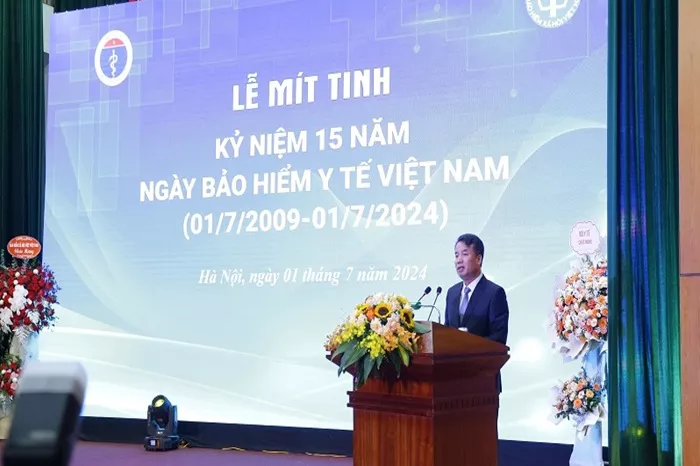Significant strides in Vietnam’s healthcare system have led to a notable increase in health insurance coverage, reaching 93.35% of the population, as highlighted by Nguyen The Manh, Director General of Viet Nam Social Security (VSS), during his speech at the Viet Nam Health Insurance Day.
Over the past 15 years, the implementation of the Law on Health Insurance has dramatically increased participation, with 93.6 million Vietnamese now insured, up from 39.7 million in 2008, which represented 46.1% of the population.
Despite the challenges posed by the COVID-19 pandemic, the rate of health insurance coverage has continued to rise, particularly benefiting low-income individuals, those in poverty, and vulnerable social groups.
Today, nearly 13,000 healthcare facilities across the country provide essential medical services to those covered by the health insurance fund. This includes both public and private institutions, ensuring broad access to healthcare.
At the grassroots level, 95% of facilities offer health insurance-based services, managing 75% of healthcare visits from 2018 to 2023, which accounted for 34% of health insurance fund expenditures.
In 2023 alone, the health insurance fund covered over 174 million healthcare visits, nearly double the number from 2009. The fund, which previously faced deficits, now operates with a contingency surplus. Last year’s expenditures reached $4.78 billion, an eightfold increase since 2009.
Over the past 15 years, the health insurance fund has disbursed nearly $38.9 billion for medical services. Its coverage has expanded to include expensive medications and targeted cancer treatments, as well as reimbursements for costly medical devices like artificial hip joints and arterial stents.
Regulatory changes have further facilitated easier access to healthcare services for insurance participants, allowing them to visit any district-level hospital since 2016 and any provincial-level hospital since 2021.
Manh attributed these achievements to the guidance of the Party and State, and the collaboration among various ministries and sectors. He outlined future goals, such as enhancing healthcare quality, expanding rights and coverage areas, and efficiently utilizing the health insurance fund to focus resources on treating rare, chronic, and serious illnesses.
Digital transformation is also a key component of the reform process. The integration of the national insurance database with the national population database has streamlined administrative procedures, improved service quality, and prevented fund misuse. All 12,581 healthcare facilities now use ID cards for examinations and treatments, simplifying processes and improving fund management.
Manh concluded by calling for continued support from the Party, National Assembly, and Government, as well as cooperation from all levels and sectors, to achieve universal health insurance and enhance healthcare quality for all citizens.






















